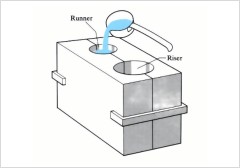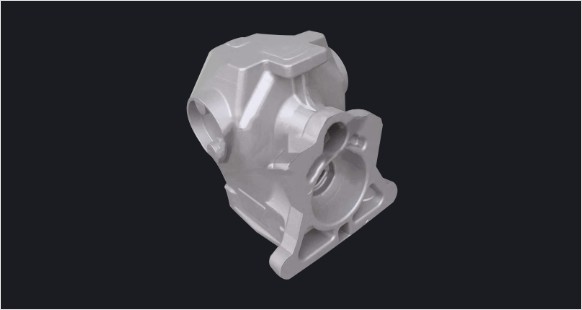Step-by-Step Process of Gravity Die Casting
1.Pattern creation
A permanent metal mold usually made of steel or cast iron should be
created at first in the process. It is designed with the shape of the
final part, and consists of two halves.
2.Preheating

The die is preheated to a specific temperature, which helps to
reduce likelihood of defects like cold spots and improve the flow
and solidification of the molten metal.
Metal mold illustration.
https://www.open.edu/openlearn/science-maths-technology/engineering-technology/manupedia/gravity-die-casting
3.Coating
The inner surfaces of the mold cavity are coated with a refractory
material or a release agent to help prevent casting sticking and
remove the solidified part.
4.Closing the mold
After being preheated and coated, the mold is closed with the two
halves aligned precisely. This creates a sealed cavity in line with
the desired shape of the part.
5.Pouring

Molten metal is poured into the mold under the force of gravity
alone. It reduces turbulence and air entrapment, which prevents
defects in the casting.
Pouring molten metal into a mold.
https://www.open.edu/openlearn/science-maths-technology/engineering-technology/manupedia/gravity-die-casting
6.Cooling and solidification
As the molten metal is introduced into the mold cavity, it comes to
cooling and solidification. Then , it takes on the shape of the mold
cavity. The solidification rate varies with the type of metal being
cast and the design of the part.
7.Mold opening
Once the molten metal is solidified, the die is opened and the part
can be removed.
8.Finishing
Further finishing processes are sometimes required to achieve the
desired shape and precision level. They include shot
blasting,trimming, and machining.





